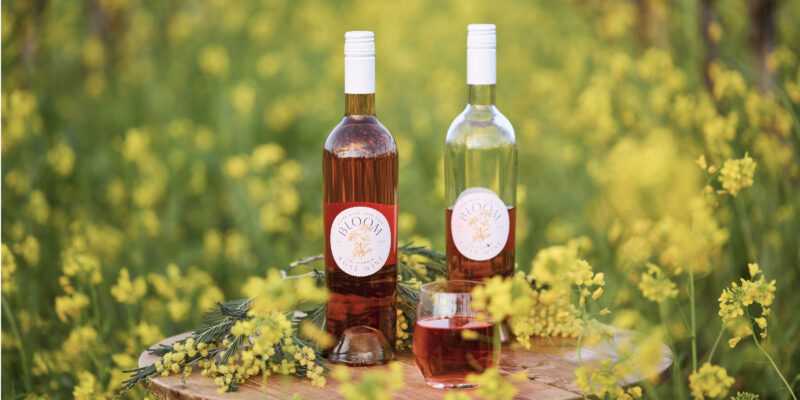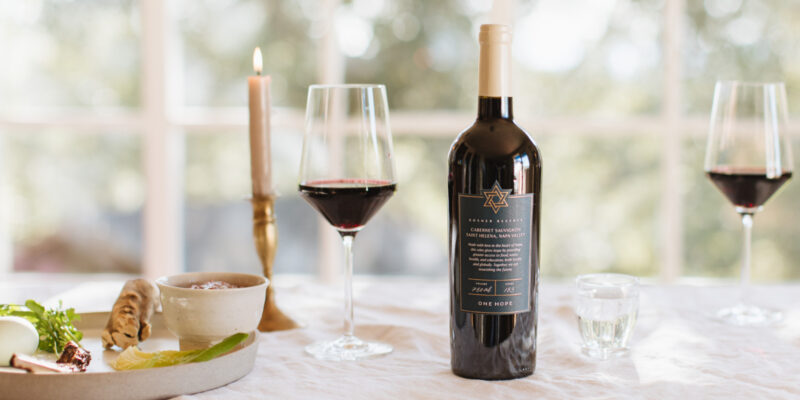Rich, earthy, full-bodied and beloved, Cabernet Sauvignon, sometimes called Cab-Sauv or Cab for short, is America’s favorite red wine. Pairing well with red meats and sharp cheeses, it’s no surprise that this red is quick to order and easy to drink. Here’s a look at everything you need to know about Cabernet Sauvignon.

Overview
The first thing to know about this unique grape is that we don’t have a clear picture of her history. There are feuding reports that place origins in the Rioja region of Spain, the Bordeaux region of France, and even ties to ancient Rome. The origins of the name are what lead to this confusion. Despite her blurry origins, most experts can agree that by the 18th century this grape variety was widely available in the Medoc region of France. Specifically, the Chateau Mouton is the first region to be definitively linked to cultivating cabernet sauvignon grapes.
In 1996 a group of scientists at University of California Davis ran a DNA genome study on the grape and learned that, genetically, it’s a hybrid cross between the sauvignon blanc and cabernet franc grapes. They suspect that this was a chance crossing that was not intentional but was absolutely a success, in the late 17th century.
How is Cabernet Sauvignon made?
Once the grapes are picked, they’re loaded into crates and taken to be weighed. With stems and skins still on, the grapes go through a processing machine to first remove stems, and then onto a conveyor belt where workers will hand sort the berries to remove under or overripe berries and leaves. The grapes are then placed into stainless steel barrels where the yeast will be added in. Then winemaker’s put a lid on the barrel and allow fermentation to occur. The wine will stay in the barrels for up to five weeks.
Later, the wine will be put into oak barrels for a period of 12 months. At that time, the winemaker will taste different batches of Cabernet, finding an optimal blend between barrels. Once the blend is created, the now finished wine is bottled and allowed to mature another six to nine months before being sent to market for sale.
Where Cab Sav is Found
Cabernet Sauvignon vineyards cover more than 650,000 acres worldwide. Not only is Cabernet the most in-demand red wine in the world, it’s also the most widely planted. Despite being grown in almost every wine region on Earth, there are only a handful of regions that are specifically noted for offering continual top-notch vintages. These regions, typically the west coast of the USA and France, are further broken down into two regions; the old world and new world.
Old world cabernet is produced, primarily, in the Bordeaux region of France. Likely the birthplace of the vine, old world cabernet showcases graphite, tobacco and floral flavors and tends to taste a bit lighter than new world wines. The tannin and acidity levels are higher in old world wines, but the leather and black cherry flavors make up for it! Other producers considered old world wineries include Italy, the Rioja region of Spain and the United Kingdom; specifically Great Britain.
New world cabernet comes, primarily, from California. They’re much fruitier and feature lower levels of acidity and higher levels of alcohol. Expect flavors of vanilla and black cherry in these blends. Other regions considered new world producers include the desert region of Washington State, South America, New Zealand, and Australia.
Cabernet Sauvignon Flavor Profile
Known for a dry, full-bodied flavor, you can expect to find the essence of black currant, blackberry, black cherry, black pepper, vanilla, licorice, and tobacco in this wine. With medium tannin and acidity content, it ranges from semi-dry to very dry in flavor.
Since the cabernet sauvignon grape is hardy and high yield, it grows easily in a variety of climates. What is interesting though, is that the flavor of the grape, and thus the wine, will vary widely based on a number of environmental factors. Clearly, these environmental factors will vary, sometimes in stark contrast to one another, by region to region.
For example, maturity on the vine and temperature at harvest play into flavor greatly. In regions like California or the eastern Washington state desert, where sunshine is plentiful, the grape is allowed to stay on the vine until full ripeness. But in France, where the cooler months come sooner, the late harvesting cabernet sauvignon grapes need to be harvested before the first frost, often leading to under ripened grapes being plucked. As a result, winemakers rely on other grape species to fill the gaps in the blend, creating a different bouquet from warm climate cabernets.
Additionally, some cabernet sauvignon blends are noted for having a flavor of green bell peppers. This characteristic is noted by the presence of pyrazines and occurs most often in under ripened grapes. While the pyrazines are present in all cabernet grapes, sunlight slowly destroys them, making them flavorless notes in cabernets from sunny regions where the grape is allowed to stay on the vine longer and reach full ripeness.
Young vs Old
Perhaps the most common misconception among wine enthusiasts is that all wines get better with age. Most wines are designed to be enjoyed within five years of their vintage, and after that can actually begin to go bad in the bottle. Cabernet Sauvignon likes to break the rules, though. It’s known for its ability to age well, highlighting new flavors from the same pressing as time goes by.
- In general, experts tend to agree that the best time to consume cabernet is around the ten year post pressing mark. Some vintages, namely those from the Bordeaux region, may continue to bloom in the bottle for up to an additional ten years. New world wines tend to reach their peak in the five to ten-year mark, though some established wineries in northern California are pressing into the two or three-decade mark.
- As a casual consumer, we’d recommend choosing a cabernet sauvignon around the six-year mark and consuming it right away. If you want to experiment with wine aging, it’s worth doing your research first to ensure you’re selecting a winemaker and a vintage that is designed and proven to improve with age. These vintages will generally be pricier to purchase and more difficult to find on a mass production level.
Cabernet Sauvignon Pairings
A good cabernet sauvignon can be a bit tricky to pair, but well worth the effort when you get it right. A multilayered wine with a variety of potential flavor palates, the trick to pairing a solid cabernet is to balance the acid and tannin content in your glass.
So, knowing that, how do you pair the wine with cheese and food? The best bet is to think savory, high fat, and intense flavors. You’ll want to balance the tannins and acids and choosing light, fruity, or sweet foods means that the wine is likely to overpower the dish. The perfect complement to a well-marbled steak, cabernet sauvignon also pairs well with hard cheeses, mushrooms, cream based sauces, or pork. The key is to focus on fatty, heavy, cream-based flavors. Pasta and other starches tend to do little to neutralize the tannins, leading to a poor pairing experience.
You should avoid chocolate pairings, too. This combination will hide the beautiful fruit bouquets that this wine is known to offer. If you desire a dry, red cabernet with your dessert, think dark bitter chocolates or other sweets that have a heavy oak or nutmeg influence. Dishes with brown sugar also tend to do nicely, making pumpkin pie and ideal combination.
Cabernet also doesn’t tend to pair well with spicy foods or foods using strong spice rubs (whether they’re hot or not) as the bold tannins and acidity in those spices tend to compete instead of complement one another.
Serving & Storing Cab Sav
While many wines are ready to be enjoyed the moment you pop the cork, a good cabernet sauvignon needs to breathe. For this reason, we suggest popping the cork and allowing air to mingle with the wine for 15-20 minutes before you plan to serve.
You should plan to serve the wine at room temperature in a wide bowl wine glass. Stemware is optional, many fans enjoy a stemless wine glass for cabernet, but you would be sure to choose the widest bowl you can find.
When you’re done, recork the bottle and store any unused wine at room temperature. The wine should stay fresh for up to three days.
Health Benefits of Cab Sav?
Red wine is widely known to have some health benefits, especially for the heart. Cabernet Sauvignon falls into this category and features plenty of resveratrol. That compound that been linked not only to a lowered risk of heart disease but also with a reduced risk of factors leading to the onset of Alzheimer’s Disease. The good news doesn’t stop there, though. As with all red wines, cabernet sauvignon has high levels of anti-oxidants, which can lead to lower cholesterol and a decrease in blood vessel damage. Of course, this is all when consumed in moderation, of course.
Betcha’ didn’t know
- Cabernet Sauvignon is SO popular, it actually has its own holiday. Starting in 2010, Cab-Sauv fans around the world starting taking to social media on the last Thursday before Labor Day to celebrate their love of the red wine. What originally started as a simple hashtag (#CabernetDay) has turned into something of a global party. Just 6 years into the celebration and major cities are now offering tastings and parties on this fun August holiday!
- Cabernet costs more, and that’s because you want more of it! As the leading red wine variety, costs of cabernet sauvignon continue to rise. In fact, some California vineyards report that ton for ton, their cab-sauv vineyards are bringing in more than five times as much profit as their merlot vineyards.
- The farmers love these vineyards. Cabernet Sauvignon has a high yield. In fact, they can harvest up to 3.5 tons of grapes per acre whereas some other reds, namely pinot noir, yield only 1.5 tons per acre. This means less space is required to produce more wine.
- It’s hearty. Cabernet grows easily in a multitude of climates, including the desert! Growers in eastern Washington state, as well as China’s Gobi desert each, produce vintages with 100 point scores.
- Like ladybugs? Then you should be drinking Canadian cabernet. Get this- researchers have been able to prove that cabernets in Canada have a special flavor, and it’s the result of an infestation of Asian ladybugs! The flavoring happens when the ladybugs accidentally wind up being worked into the fermentation process.




No comment yet, add your voice below!